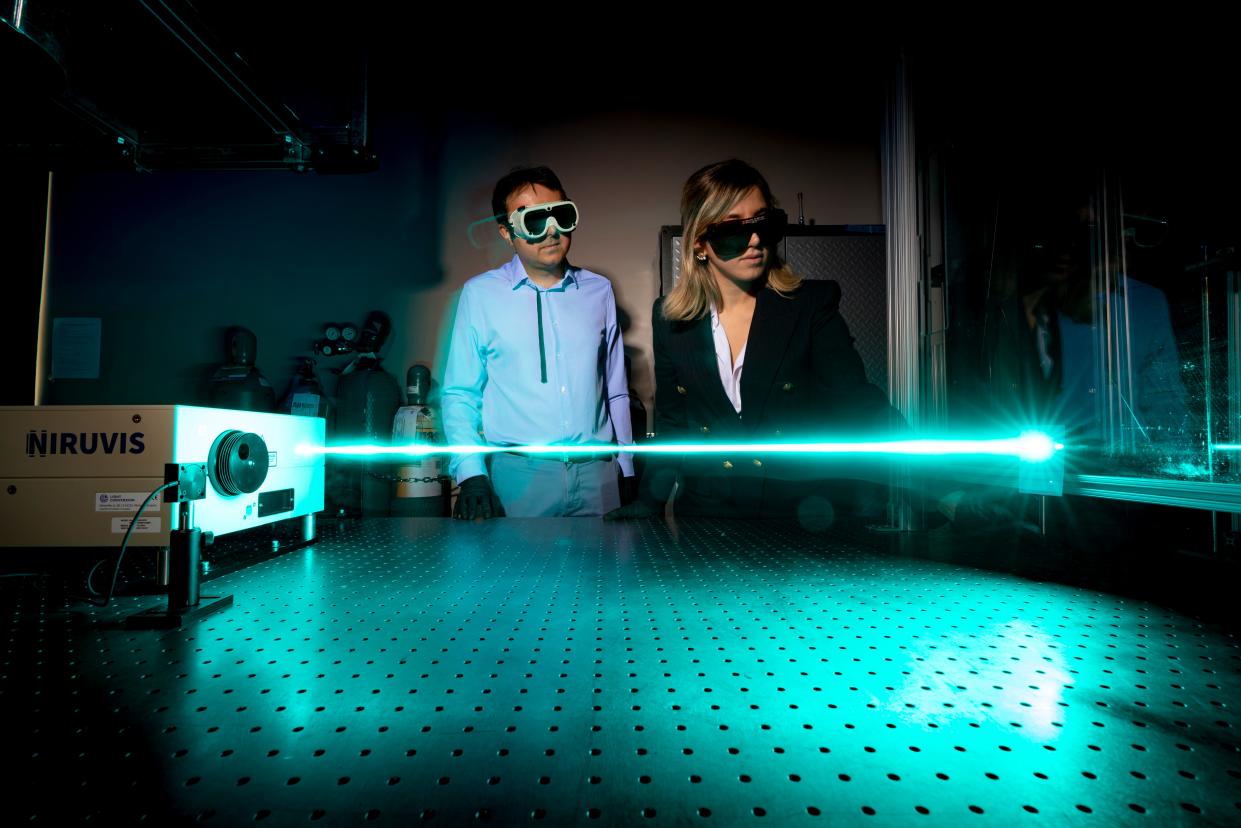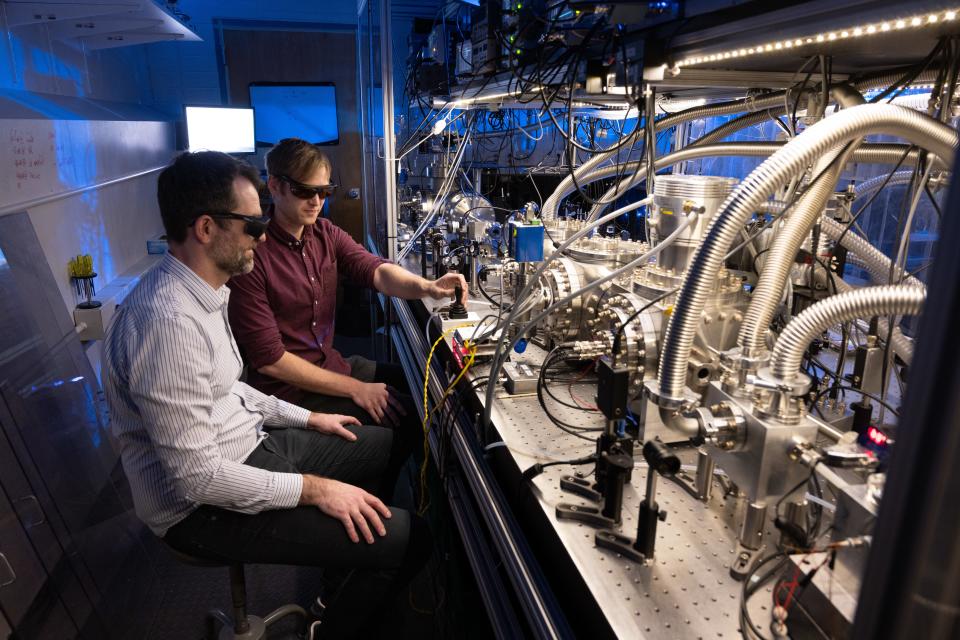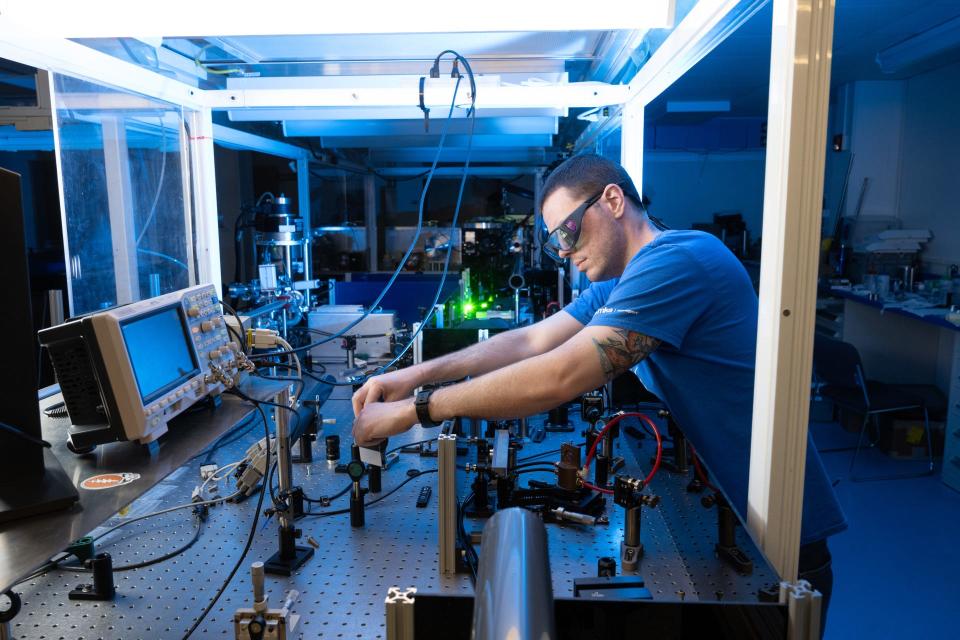CSU announces new laser facility to create clean energy through fusion

Colorado State University could soon become home to one of the most powerful laser facilities in the world through a $150 million public-private partnership with Marvel Fusion, a German company pursuing the commercial application of fusion energy, CSU officials said Monday.
The partnership would support construction of a next-generation, high-power laser and fusion research facility on CSU’s Foothills Campus in northwest Fort Collins, the university said in a news release. The Board of Governors, which isn’t scheduled to meet again until Oct. 5-6, needs to approve the financial details before the agreement becomes official.
Marvel Fusion’s mission, according to its website, “is to solve one of the biggest challenges of mankind: the creation of unlimited zero-emission energy.”
Scientists at Lawrence Livermore National Laboratory achieved a major breakthrough in December, using laser beams to achieve fusion ignition that produced a net gain of energy. More energy was produced from the fusion ignition than was needed to produce it, a milestone that scientists across the globe have been working on for decades, according to a U.S. Department of Energy news release.
The experiment was repeated to confirm the results last month, again creating a net gain of energy, said Grant Calhoun, director of industry research contracting at CSU.
More: CSU plans to build a new bat research facility in Fort Collins. Here's what we know
There’s been increasing interest, research money and venture capital in both government agencies and the private sector in recent years, Calhoun said. “And that was accelerated by that breakthrough in December and the replication of it in July.”
That breakthrough was achieved using longer-pulse lasers that can shoot “maybe twice a day,” in a facility the size of several football fields, Calhoun said.
CSU has a smaller, faster laser that it began developing in 2013 that can shoot up to 10 times per second, he said.
Marvel Fusion, founded in 2019, has performed previous experiments and research using the faster, “ultra short-pulse” laser at CSU and believes it provides the best opportunity for achieving the company’s goal of creating clean energy through fusion ignition.
Nuclear power plants create energy through fission, the splitting of atoms of elements like plutonium and uranium, to heat water and create steam that turns turbines to generate carbon-free electricity, according to the U.S. Department of Energy Office of Nuclear Energy’s website. The byproduct, though, is dangerous nuclear waste.
Fusion reactions combine atoms, usually two atoms of hydrogen to create a single atom of helium like those that fuel the sun, with elements that are nearly limitless on Earth, without leaving behind dangerous waste.

“This public-private partnership sets the global standard for laser-based fusion research, propelling the development of a safe, clean, and reliable energy source, Marvel Fusion’s co-founder and CEO, Moritz von der Linden, said in the news release. “It is an incredible step forward for Marvel Fusion and a testament to our success and vision. Working with the world-class team at CSU over the past two years has been invaluably productive. We are immensely grateful for the trust and support of CSU, the state of Colorado, and the U.S. Department of Energy’s ongoing support through the LaserNetUS program.”
CSU is one of eight universities — seven in the United States and one in Canada — that make up the LaserNetUS program, along with three research facilities: Lawrence Berkeley and Lawrence Livermore national laboratories and the Stanford Linear Accelerator Center, all located in the San Francisco Bay Area.
Each has its own unique laser capabilities, said Ken Reardon, associate dean for research and a professor of chemical and biological engineering at CSU.
Research groups from Los Alamos National Laboratory, Princeton and Stanford universities, and dozens of others, have used the “ultra short-pulse” laser at CSU for a variety of projects, mostly involving imaging, Calhoun said.
CSU’s laser has particles so small and moving so fast that they can go through solid objects, even metal, Calhoun said. And it can provide three-dimensional x-rays of objects in motion, like a turbine engine. It’s the most sought-after laser in the LaserNetUS program, used for about 30% of the participating projects, he said.
More: CSU engineering students design devices so man without arms can 'live like everyone else'
The Department of Energy recently announced $12.5 million in additional funding to CSU for laser upgrade prototyping and increased LaserNetUS support, CSU said in its news release.
“Ours can do what Marvel Fusion wanted and can do what they needed, in terms of having a high power and having this pulsing ability,” Reardon said. “But they also talked about how good it is to just work with our researchers. They know them. Their experts know our experts, and they recognized that there was this mesh of that kind of expertise that could be highly complementary to them and help them be successful.”

Where might the facility be located?
Jorge Rocca and Carmen Menoni, both distinguished professors in electrical and computer engineering at CSU, have worked on high-powered lasers for decades, Reardon said, and are excited about the opportunities the new laser facility will create.
Undergraduate and graduate students will have the opportunity to perform “hands-on” research with high-powered lasers. And CSU will become the epicenter of laser research and technology, Calhoun said, attracting top faculty and researchers throughout the world.
Details on the exact size and design of the new facility are still being worked out, Reardon said. The initial site selected is near CSU’s existing Advanced Beam Laboratory on the Foothills Campus.
The project, targeted for completion in 2026, is being designed to feature at least three laser systems, each with a multi-petawatt peak power and ultra-fast repetition rate of 10 flashes per second, CSU officials said in the news release. The center will be designed to accommodate expansion and additional lasers in the future, Reardon said.
Initial staffing, he said, will probably include about 20 CSU faculty and staff along with 20 or so employees of Marvel Fusion.
“This is special,” Calhoun said. “This is an example of academia and industry working together to solve one of the world’s biggest challenges: creating clean energy through fusion.”
Reporter Kelly Lyell covers education, breaking news, some sports and other topics of interest for the Coloradoan. Contact him at kellylyell@coloradoan.com, twitter.com/KellyLyell or facebook.com/KellyLyell.news.
This article originally appeared on Fort Collins Coloradoan: Colorado State University partners with Marvel Fusion on clean energy

